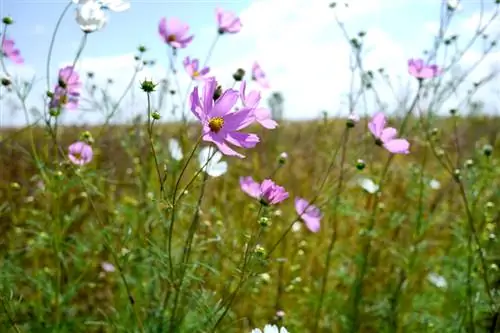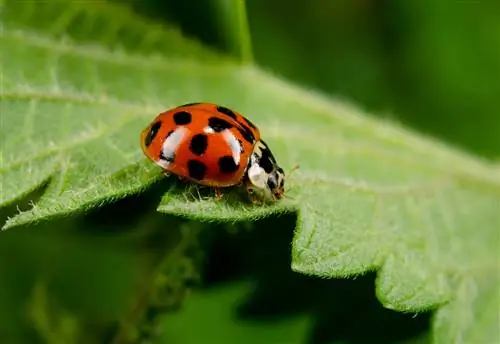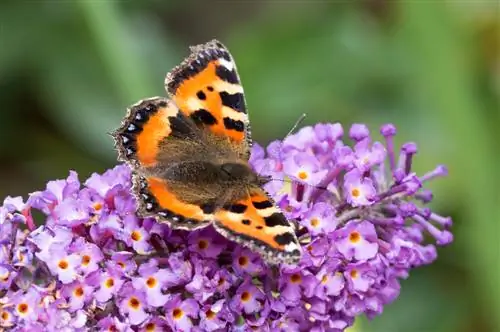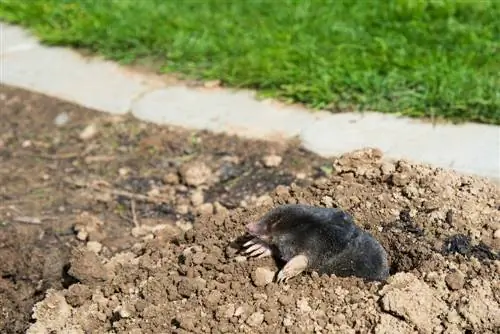- Author admin [email protected].
- Public 2023-12-16 16:46.
- Last modified 2025-01-23 11:22.
A lawn without flower heads looks beautifully lush green, but it offers little food for butterflies and other endangered insects. But it's not at all difficult to offer the animals a new home and, with the right plants, to even attract protected species into your own green space.
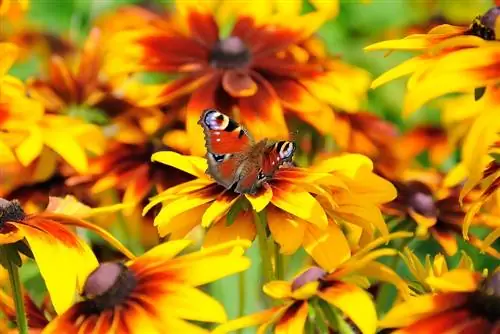
How do you attract butterflies to the garden?
To attract butterflies to the garden, you should use a variety of bed designs, create wild corners with nettles, choose insect-friendly plants such as globe thistle, asters or sedum and offer them protected winter quarters such as garden sheds.
There can be room for clutter in the garden
If you want to attract butterflies, you should let go of the idea of a golf lawn and a neatly tidy garden. Stinging nettles that are allowed to grow behind the compost or a flower meadow that is rarely mown serve as a nursery for the caterpillars and provide food for a wide variety of butterfly species through their variety of flowers. Don't clear away all the fallen fruit, as the fermenting fruits are very popular with many species of insects and butterflies.
What should a butterfly garden look like?
The rules for designing a butterfly-friendly garden arise from the life cycle of the butterflies. The pretty animals reproduce in the summer months. They overwinter in sheltered places or retreat to warmer climes in the fall.
- Make sure you have a richly laid table from early spring through to autumn.
- Make sure that the butterflies that are already settled have suitable food plants for their offspring. Stinging nettles, for example, are extremely popular with local butterflies.
- Offer the animals winter quarters. You don't have to put in much effort for this. Protected places on or in the garden shed are often used for wintering.
The most beautiful butterfly plants
The depth of the flowers of many typical cottage garden perennials corresponds exactly to the length of the moth's trunk, so that they can easily access their food. When buying, pay attention to single-flowering species, as these give insects easier access to nectar.
The colorful garden inhabitants are happy to settle on the following plants:
- Ball Thistle
- Asters
- Loosestrife
- Sedum
- Coneflower
- Spurflower.
Also trees like
- Honeysuckle,
- panicle hydrangea,
- buddleia
- elderberry
offer valuable food for the delicate animals.
Don't cut off all the flowers in the herb bed, because lavender, oregano or thyme are also often used as food plants. Also sow flowers such as bee friend, nasturtium and marigold. Make sure you have a diverse bed design so that butterflies and bees always find a source of food.
Tip
If space allows, you can create a small butterfly biotope with a wildflower bed. The seed mixtures available from specialist retailers can also simply be sown in a flower pot or in flower boxes.


